I never use Q-tips myself. I don't think it would be detrimental on hybrid lilies with large and bold sexual parts, but I dabble with several genera that are much more delicate. But even with lilies, I either pinch off a stamen and transfer the pollen directly or use a paint brush. A cotton swab may seem soft to us, but it is really quite unyielding in comparison. Also take into consideration the tendency cotton has to grab onto miniscule objects or even itself (think of how a spinning wheel works) due to its rough texture at a microscopic level. With a paint brush, I bet you'll find that pollen clumping is less of a problem, as the brush hairs will inherently separate the grains for you. And spreading the grains evenly over the stigma is so very easy, even placing grains in stigma crevices where they may have a better chance of germinating, given certain weather conditions. Try doing that with a Q-tip! I never need to worry about accidentally damaging a stigma with a paint brush.
Never heard of grain
cone size in relation to Lilium.
In regards to unsuccessful pollinations, Lorn, have you considered the possibility of ploidy incompatibility?
If you are multiplying a virus unintentionally via scaling, you wouldn't be the first. Snowdrop (Galanthus) enthusiasts have been unknowingly chipping and twin scaling bulbs of cultivars later found to be virsused for centuries. Only in the past decade or so has some of these desired qualities been found to be virus induced.
A7 is indeed super floriferous, and perhaps that is why it hasn't increased substantially over the years. I have an unidentified Chinese trumpet species that has never divided or produce any stem bulblets, too, in the six years I have had it.
About cut style bleeding: I can't recall any hybridizer using the method mentioning it. But I don't know that they would make any point of it. If the sap seemed to flow, of course they would wait until it subsides before applying pollen. It would be silly not to!
dellac said:Having just cut styles on some of my asiatic seedlings, I can't say I saw any flow that may dislodge pollen - maybe trumpets just get wetter? Hilarious!
I wouldn't be the least bit surprised that this phenomenon might vary between species and hybrids.
Like you, Della, I often leave stamens on pod parent flowers that I pollinate. Sometimes I still want the pollen for something else. In such a case, I usually remove two or three stamens that will get in the way the most. Pollen stained fingers don't bother me, anyway.

But I doubt that that actually
bothers any of us.....
Your 5 year old just may be a budding future botanist!
I do "way-out" pollination crosses, too. Heck, when you've got the pollen and the pod parent, what have you got to lose? David Sims crossed martagons with asiatics and they are a called martasians. He always had to use the embryo rescue tichnique, since the resulting hybrid embryo was not compatible with the seed endosperm. But you never know, Della. Black Beauty was one of those one-in-ten-thousand crosses. When Leslie Woodriff forst showed off his success, no one believed him.
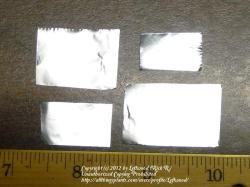
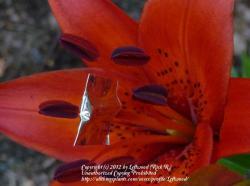
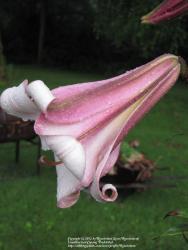
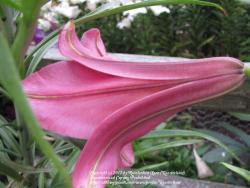


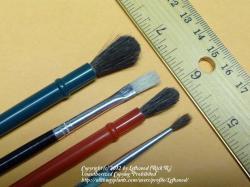
But I doubt that that actually bothers any of us.....